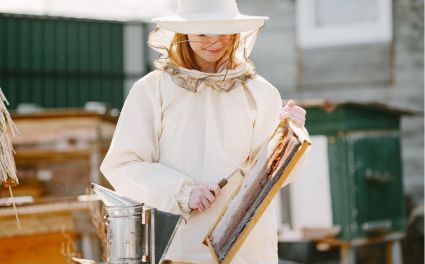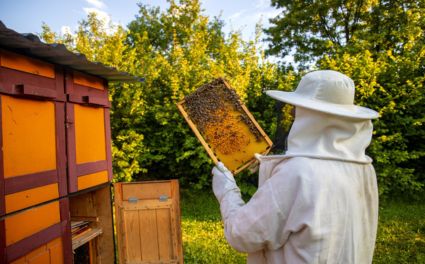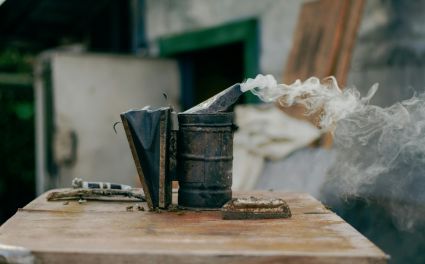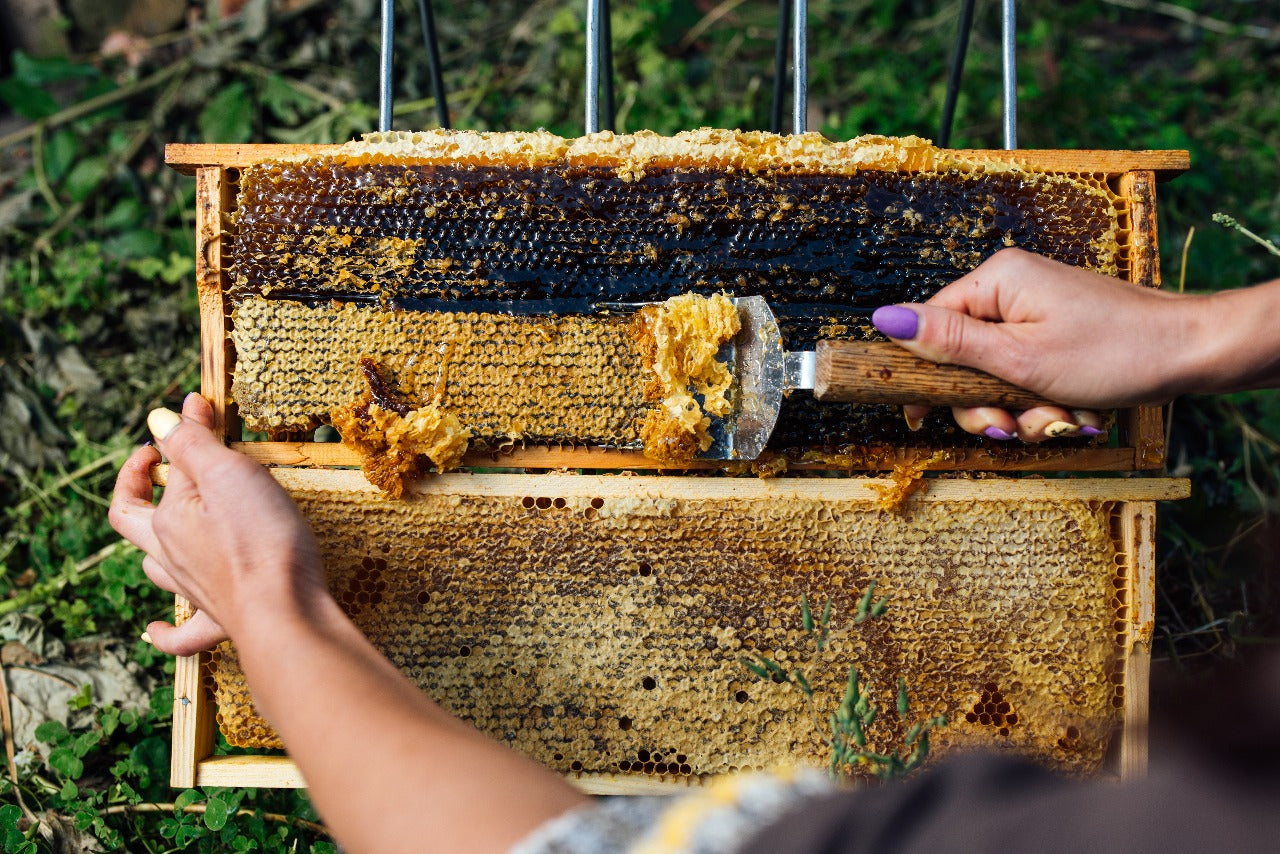From cosmetics to food, honey manufacturing is essential to many different businesses. Beekeepers use a variety of instruments and procedures to maintain the health and productivity of their hives to maximize honey production.
Beekeeping brushes play an important part in these items. This blog examines the value of honey production and how using beekeeping brushes can improve beekeeping techniques.
Beekeepers may maximize honey production while also ensuring the safety and well-being of their bees by using the proper methods and equipment. Learn more about beekeeping brushes' crucial function in boosting beekeeping's art and production.
Understanding Beekeeping Brushes
Beekeepers depend on beekeeping brushes as key instruments to properly handle bees and increase hive productivity. These brushes were created to transport bees safely and effectively without harm or discomfort.
Beekeeping brushes come in various varieties, each with a particular use. During hive inspections, bees frequently gently brush off frames or surfaces using soft bristle brushes. They lessen disturbances to the colony while assisting in maintaining a peaceful and controlled environment.
The feather brush is a different kind of beekeeping tool that is very helpful while handling queen bees. The delicate feathers allow beekeepers to gently guide and manage the queen without harming her.
Using beekeeping brushes has uses beyond simple handling. These brushes also help to keep the hive clean and sanitary. Beekeepers maintain the hive as a clean and healthy environment for the bees by carefully brushing away extra propolis, wax, or other debris.
There are various advantages to using beekeeping brushes in honey production. They aid in reducing bee hostility by gently massaging the hive to encourage harmony and cooperation. Additionally, the delicate removal of bees from frames or other surfaces enables beekeepers to extract honey or conduct inspections with the least disruption. This helps maintain the general health and productivity of the hive, in addition to guaranteeing the safety of the beekeeper.
Using Brushes to Handle Bees Safely
Both the beekeepers and the health of bee colony's healthy and proper bee-handling procedures. Using beekeeping brushes is essential for maintaining the safe management of bees and conducting inspections of hives with the least disturbance.
Beekeeping brushes give beekeepers a soft and efficient instrument for moving bees without harming or upsetting them, aiding in safe bee management. Maintaining your composure and avoiding making unexpected movements when approaching hives is crucial because doing so could make the bees become defensive. Beekeepers can delicately and methodically move bees away from frames, hive parts, or other surfaces by utilizing brushes, which lowers the chance of stings and preserves a controlled environment inside the hive.
It's critical to abide by a few recommendations and principles when handling bees with brushes. Select a brush first that has gentle bristles to protect the bees. Use soft strokes to gently brush the bees, encouraging them to move without upsetting them. Be careful not to irritate the bees by pressing too firmly or flicking the brush quickly, which could result in stings.
Focus on individual bees or small clusters rather than attempting to move larger groups of bees simultaneously while using a brush during hive inspections. This makes the handling procedure more precise and under control. In addition, be aware of the queen bee's presence and exercise caution when using brushes in her vicinity.
Additionally, it's critical to remember that beekeeping brushes must be clean and devoid of any chemicals or toxins that can endanger the bees or pollute the hive. To keep the brushes in top shape for handling bees safely, clean them frequently.
Beekeepers can dramatically lower their risk of getting stung, maintain a peaceful hive environment, and advance the general safety and well-being of the colony by adhering to these recommendations and utilizing beekeeping brushes properly.
How to Choose the Right Beekeeping Brush for Your Hive
Many variables should be considered when choosing a beekeeping brush to ensure it meets the unique requirements of your hive and beekeeping techniques. Consider the following important factors when selecting the best beekeeping brush:
Considerations for choosing a beekeeping brush:
Bristle Type: Horsehair or synthetic fibers are frequently used to make the bristles on beekeeping brushes. While synthetic brushes might be more durable and convenient to clean, horsehair brushes are kind to bees and are a favorite among beekeepers.
Size of Brush: Consider the brush's dimensions and compatibility with your hive and frames. A brush that is too big could be difficult to handle, and a brush that is too little might not be able to move bees well.
The various brush possibilities offered and how well they fit particular hive conditions:
Soft-bristled brushes: These brushes are perfect for handling bees gently and reducing the chance of endangering or upsetting them. They work effectively for normal hive inspections and the majority of hive conditions.
Long-Handled Brushes: Beekeepers can access bees in difficult-to-reach hive sections or when working with deep supers, thanks to brushes with longer handles that offer more reach and flexibility.
J-shaped Brushes: With bristles organized in a J-shaped curve, these brushes have a distinctive shape. They are especially suited for delicate activities like queen bee introductions or swarm removal because they are made to sweep bees softly without squashing or hurting them.
Suggestions for selecting the best beekeeping brush for your hive's requirements:
When choosing a beekeeping brush, consider the particular needs of your hive and your beekeeping techniques. Consider elements including your hive's size and design, the disposition of your bees, and the duties you usually carry out. To acquire ideas based on your particular region and conditions, asking experienced beekeepers for their counsel or speaking with a local beekeeping association may also be beneficial.
The correct beekeeping brush can help you maintain your hive smoothly and effectively, protect your bees' welfare, and increase productivity during hive inspections and honey production.
Techniques and Best Practices
Using the right methods and following best practices to maximize beekeeping brushes and improve honey production is critical. Here are some crucial things to remember:
Proper techniques for using beekeeping brushes effectively:
Use smooth, delicate strokes while brushing bees away from desirable areas when using a beekeeping brush. Avoid using too much force or abrasive scrubbing because these actions can frighten the bees and make them defensive.
Concentrate on brushing single bees as opposed to huge groupings. This reduces the possibility of unintentionally hurting bees or producing unnecessary disruption inside the hive.
Maintaining hygiene and cleanliness of the brushes:
Regular Cleaning: To stop the transmission of pollutants or diseases among hives, clean beekeeping brushes after each use. The brushes should be cleaned with warm water and mild soap to remove dirt or residue.
Dedicated Brushes: To avoid cross-contamination and preserve hive-specific hygiene, consider using separate brushes for certain hives or chores.
Best practices for incorporating beekeeping brushes into your honey production and beekeeping routine:
Utilize beekeeping brushes to gently move bees away during routine hive inspections so that you can access frames or carry out important operations without disturbing the bees.
Beekeeping brushes come in handy when handling queen bees for inspection or transfer, according to queen bee management. To protect the safety and well-being of the queen, use them with caution and precision.
Through training programs or advice from seasoned beekeepers, familiarize yourself with correct beekeeping procedures, including the efficient use of brushes. This fosters effective bee management and confidence-building.
By adhering to these methods and best practices, beekeepers use beekeeping brushes in their honey production and beekeeping routine by pheromones the bees' health, lessening commotion inside the hive, and helping beekeepers have successful and fruitful operations.
Cleaning and Maintenance Tips for Your Beekeeping Brush
The efficiency of your beekeeping brush and preventing the transmission of pollutants or diseases among your hives depends on regular cleaning and maintenance. Keeping your beekeeping brush in top shape requires regular cleaning and maintenance.
Regular Cleaning: To remove any dirt, debris, or propolis that may have developed on the brush after each usage, give it a thorough cleaning. Brushes should be gently scrubbed with warm water and soap or detergent. Before storing, give the brush a good rinse and make sure it is dry.
Disinfection: Periodically disinfect the brush to eliminate any potential pathogens. For a few minutes, you can let the brush sit in a solution of water and bleach (one part bleach to ten parts water). After that, carefully rinse the brush in clean water.
Inspection: Regularly inspect the bristles of your beekeeping brush for signs of damage or wear. To maintain the brush's efficiency, cut any bristles that are loose or frayed.
Storage: To avoid moisture buildup and mold or mildew development, store your beekeeping brushes in a tidy and dry location. Keep it in a case or container to protect it from dirt and other impurities.
Dedicated Brushes: Using special brushes for various hives or jobs to avoid cross-contamination. This preserves each hive's health and cleanliness.
Replacement: Your beekeeping brush's bristles may become worn out or harmed over time. When the brush's bristles start to soften or stop working, replace it.
You can keep your beekeeping equipment in good shape and help your bees be healthier and more productive by adhering to these cleaning and maintenance guidelines. A good and sustainable beekeeping activity depends on regular cleaning and appropriate maintenance.
OZ Armour's Beekeeping Brushing
Regarding beekeeping brushes, OZ Armour stands out as the top choice for beekeepers seeking superior quality and a comprehensive range of beekeeping products. Our commitment to excellence is evident in every aspect of our beekeeping brushes.
Crafted with precision and made from premium materials, our brushes are designed to be durable and highly effective in handling bees. But our offerings continue beyond there. At OZ Armour, we pride ourselves on providing the best beekeeping products in the industry. From beekeeping suits to protective veils and other essential equipment, we have everything you need to ensure a successful and safe beekeeping experience.
Our dedication to delivering exceptional customer service means you can rely on us for all your beekeeping needs. Whether you are a seasoned beekeeper or just starting, OZ Armour is your trusted partner, offering high-quality beekeeping brushes and a comprehensive range of beekeeping supplies to support your passion and ensure the utmost safety and productivity in your beekeeping endeavors.
Choose OZ Armour for unmatched quality, reliability, and the convenience of finding all your beekeeping essentials in one place.




